The title of this post does not contain a reference to the star that powers our World. In fact, I have had more than enough of its streaming radiations of late, and any brief appearances of clouds have been most welcome. No, in this case, the Sun in question describes a particularly amazing bird, one that was near the top of my desired sightings list, and one that normally requires a visit to a remote part of Guyana to observe.
In terms of its avian residents, Guyana possesses a similar collection of impressive species to that of its neighbor, Suriname. It is also a common theme that the best birds are to be found in the country’s vast areas of forests that are, also like Suriname, relatively difficult to access. During my short visit to Guyana, I would not have an adequate amount of time for another journey into that ecosystem, and the route that I used was, by necessity, not very productive in terms of seeing new birds. The populated areas of the coastal region, the linear village
along the road from Suriname and the capital, Georgetown, did host fairly large numbers of birds, but almost everything that I saw there were common, widely distributed species that I had seen on earlier trips. Only one raptor, which I have not been able to identify, since it may have been a juvenile, could have possibly been counted as I passed through that area.
However, in order to reach my next destination, Brazil, I would need to transfer to the border town of Lethem, which is located in a large area of savanna near the border, a habitat with its own distinctive set of bird species, including the one I sought the most in Guyana. As it turned out, the small plane that brought me there was overweight, and I agreed that my bike could be sent on the next flight later the same day. While that was annoying, as I was waiting for the second plane to arrive I was able to get my first new bird in Guyana, Burnished-Buff Tanager, a fairly common bird, but a nice one.
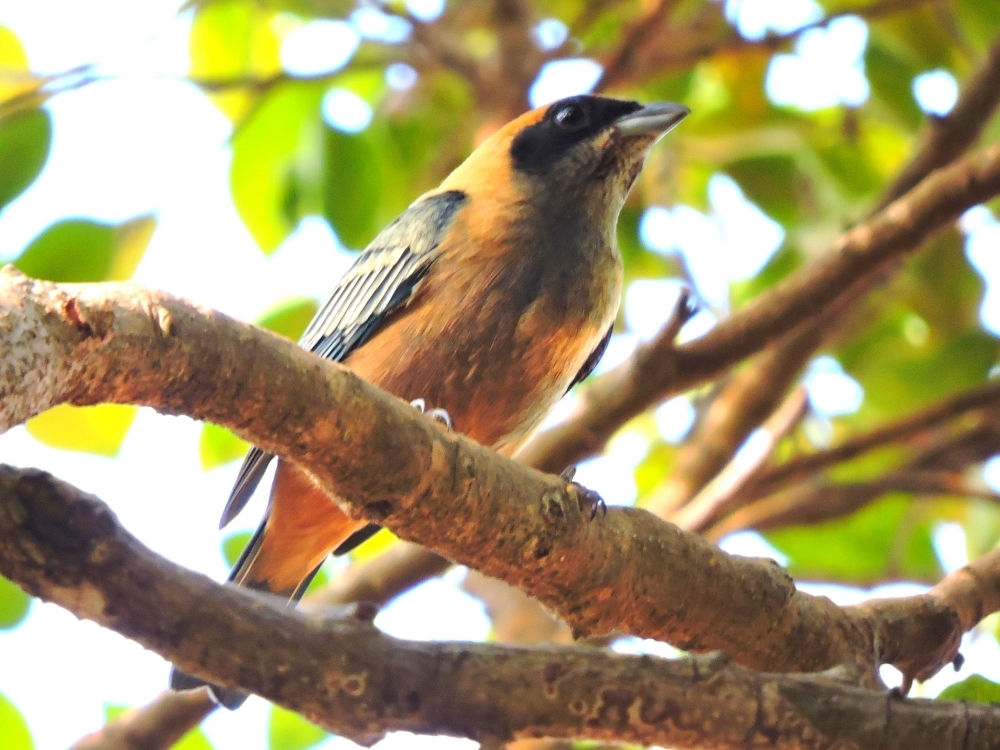
However, in order to see the bird I was after, I would need to continue further afield, to the Amerindian village called Karasabai. That settlement is located to the northeast of Lethem, about ninety kilometers distant along an occasionally-rough dirt road. I could have ridden there, as I have traveled on worse roads in the past, but I suspected that its condition might have led to an extra day’s travel in each direction. That proved to be a good assumption, since a heavy cloudburst one afternoon transformed its surface into a sloppy mess for a while. I also considered cycling out to the village, and then going directly into Brazil, just over the nearby river, at an unofficial border crossing. In the end, I decided to take the local bus from Lethem to the village, and back, which, while not the most appealing method, was at least relatively quick.
I was very impressed with the village of Karasabai. While not totally, modern
in appearance, compared to many indigenous villages around the World this one seemed to be sturdily built, and its population of around three thousand live in a picturesque basin encircled by a range of low mountains. Everyone there was exceptionally polite and friendly, and though there were a few motor vehicles around, many people rolled around the village on beat-up, old Brazilian bikes. In short, just the type of place I am bound to enjoy.
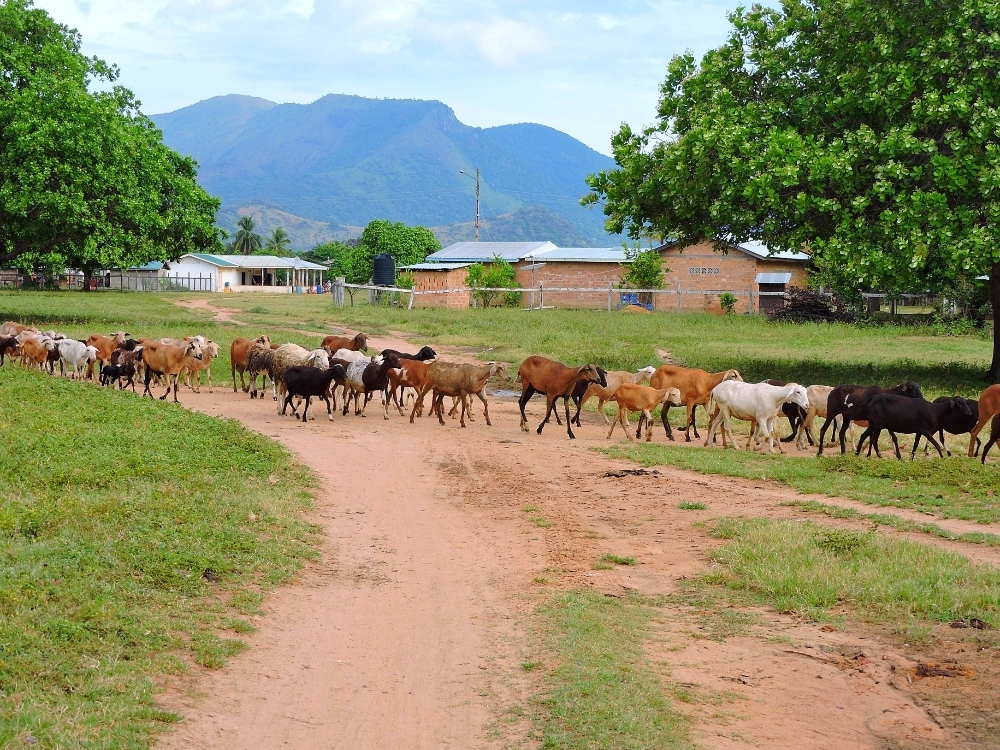
The village is in the process of building a small eco-lodge at the trailhead that leads up to where its celebrated birds live, but at the time I was there it wasn’t quite ready yet, so I stayed in the basic guest house in the main part of the village, which worked out fine. It was a few kilometers away from the trailhead, however, and since my bike was still disassembled I was given one of the local bikes so I, together with the young man who was my guide, could ride up to the site. I must have looked ridiculous, since that bike was about four sizes too small for me, not to mention that with my relatively massive weight, I kept bending the seatpost backward! However, in the end we made it to the trailhead without too much trouble.
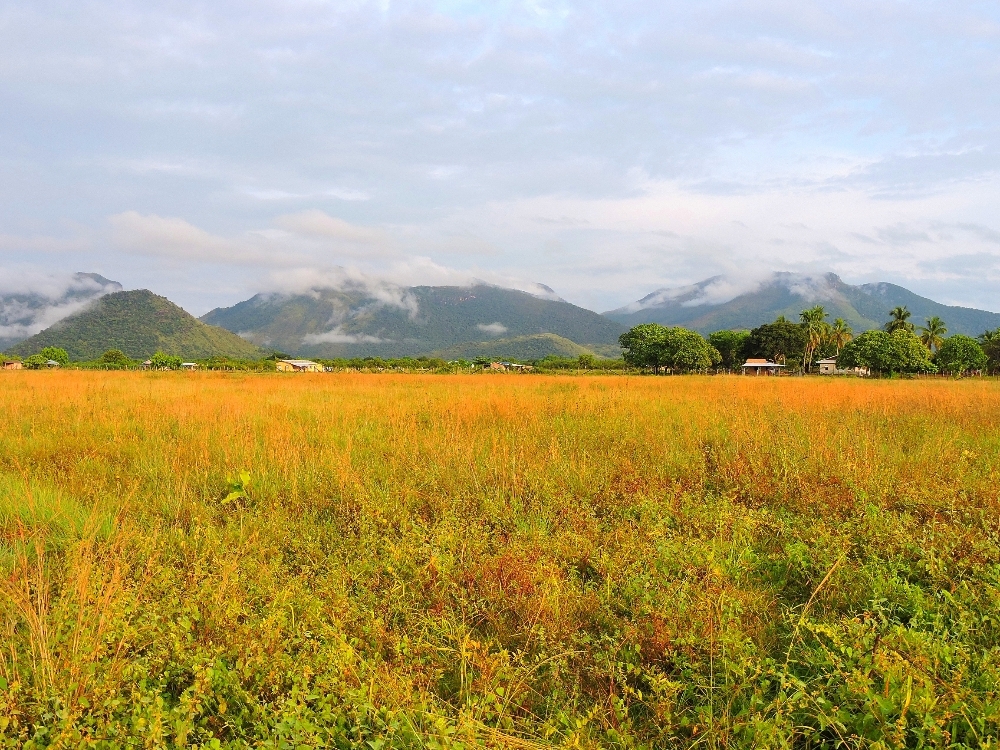
Of course, I was hopeful that more than one new bird species would be found in that area. While few good photos were obtained, a handful of nice, new birds were, in fact, observed. Those included, Crested Bobwhite, Pale-Vented Pigeon, Boat-Billed Flycatcher, Yellow-Bellied Eleania, Pale-Eyed Pygmy-Tryrant, Hooded Tanager, Green-Backed Trogon, and one species that graciously came out into the open, Double-Striped Thick-Knee (from a family of shorebirds that appears to be trying to evolve into Secretarybirds.)
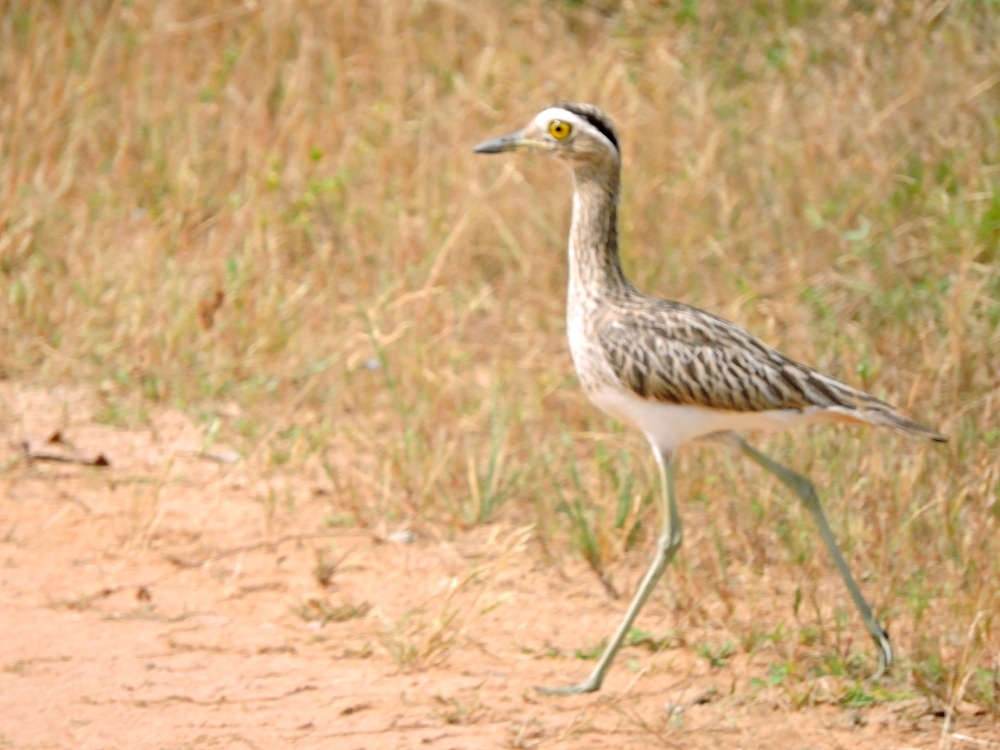
However, while I don’t often plan a visit somewhere just to see a specific bird, because disappointment is often the result, in this case there was really only one bird I wanted to see. On that day optimism soon took hold, since my guide was in radio contact with another ranger who was already in the area, and he had heard, and then located, the birds we were seeking...Sun Parakeet! Of course, upon our arrival, a light rain was falling, the birds were quite distant, partially obscured by leaves, and I was worried that this might have been the best image I would be able to obtain.
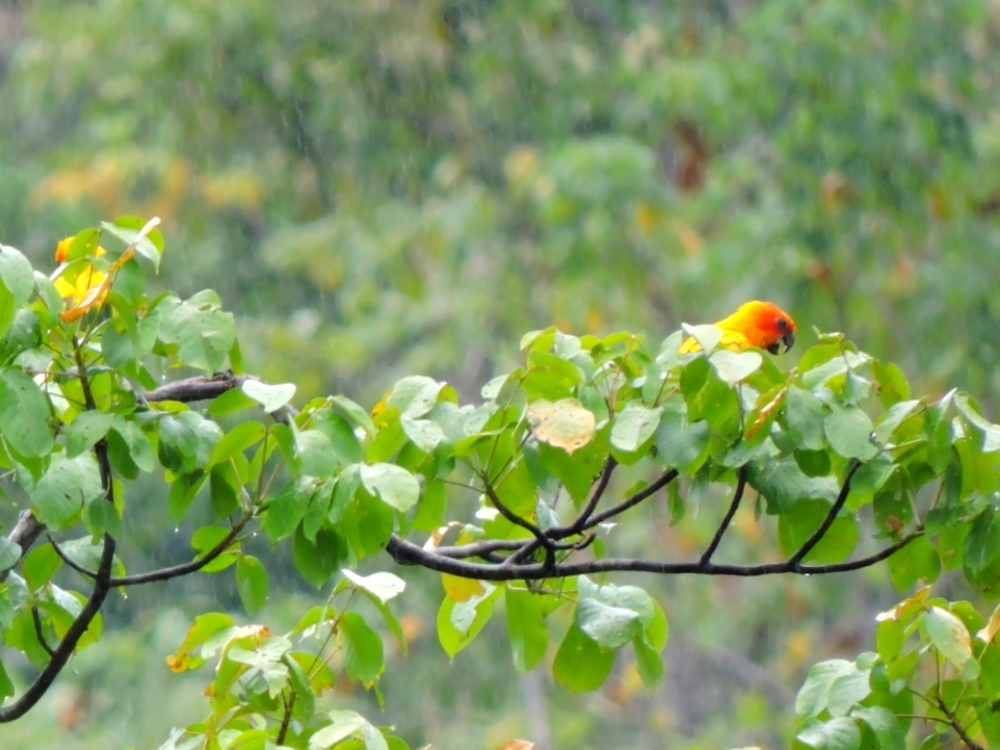
Fortunately, a short while later, the rain had ceased and a pair moved out into the open.
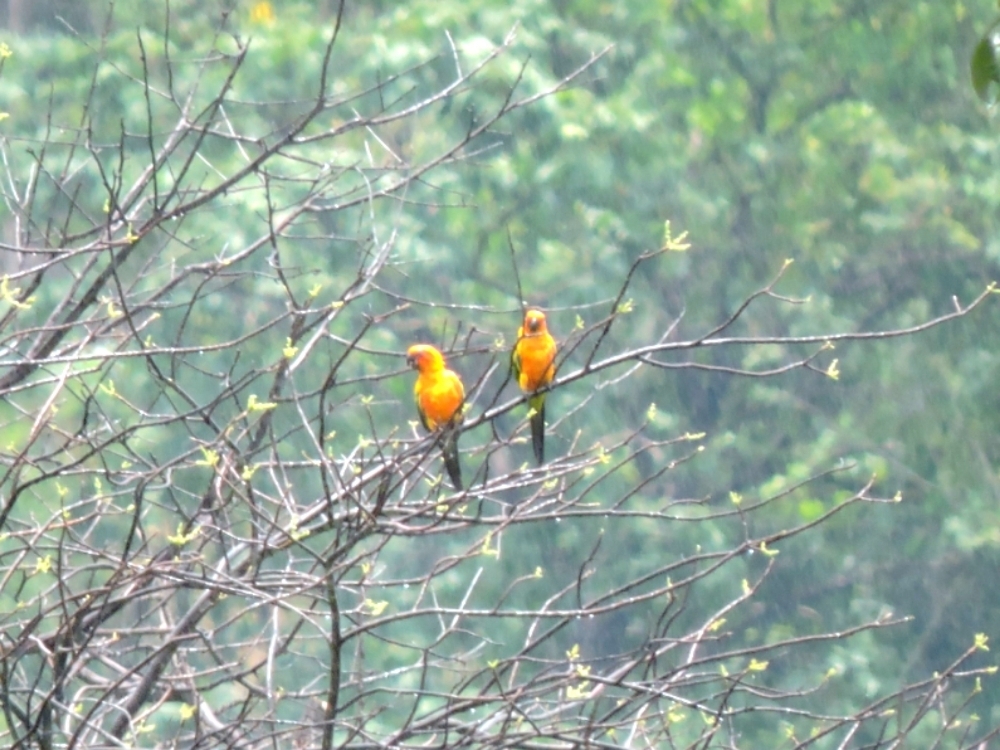
And, after maneuvering through a field of cassava, I was able to have a reasonably close view.
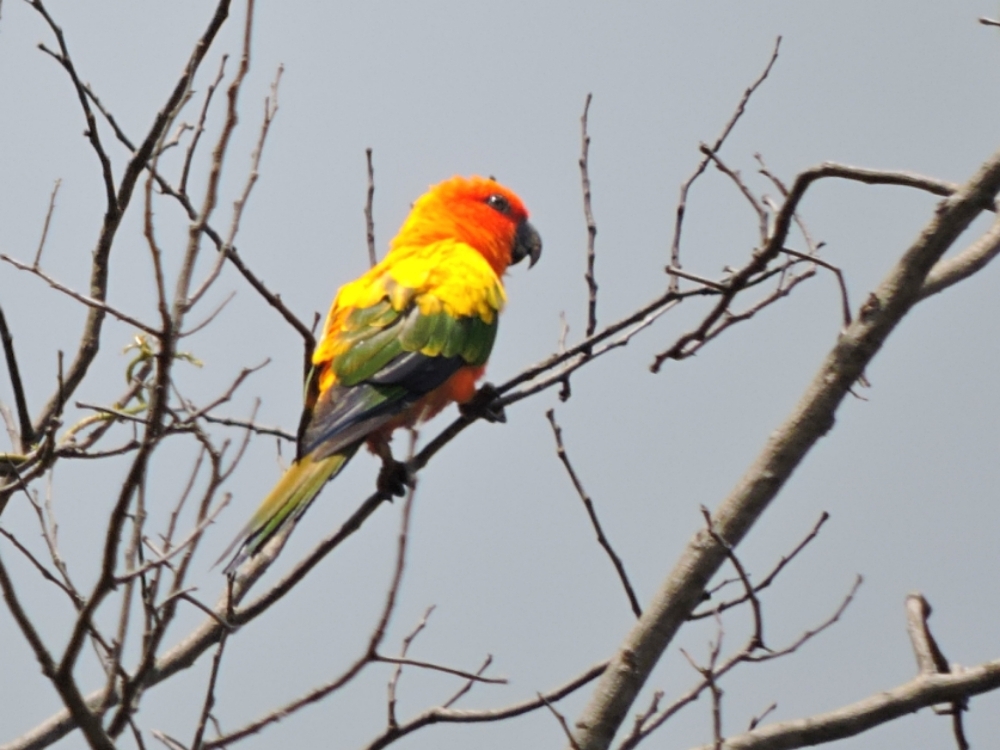
As I mentioned in my post about St. Johnsbury, eastern North America used to have its own parrot species, the Carolina Parakeet, similar in appearance, but with yellow and orange restricted to its head, and correspondingly more green on its body. Sadly, that beautiful bird has been extinct for over a century. It is said by some that the Sun Parakeet is the closest extant relative to our lost North American bird. I don’t know if that is true, but, while on the trail, my guide reached out and grabbed a small nut-like fruit off a nearby tree, which he said was one of the Sun Parakeet's favorite foods. That particular fruit bore a noticeable resemblance to the North American Cocklebur, upon which the Carolina Parakeet primarily subsisted, a fact that I found to be fascinating. How much have we in the north lost to not have birds such as these inhabiting our wild spaces and visiting our backyards? While I will never see a Carolina Parakeet, this may have been the next best thing.
The Sun Parakeet is also endangered in the present, primarily due to loss of habitat and capture for the pet trade. The people of Karasabai are rightfully proud of their colorful neighbors, and are actively trying to protect them and their habitat. In that small corner of Guyana, therefore, their future is relatively more secure. I am simply happy to know that they still exist, and to have succeeded in my quest for the Sun.